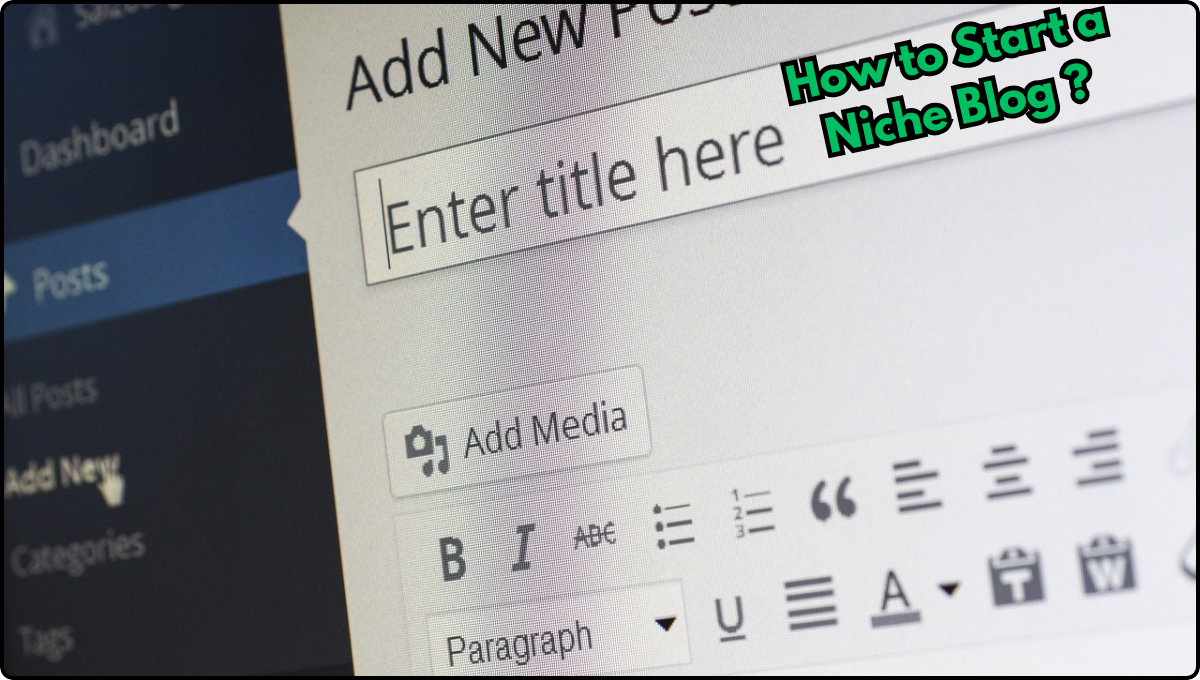How to Start a Niche Blog in USA?
The blogging world continues to evolve, and in 2025, it’s clear that the future belongs to niche bloggers. Instead of trying to become the jack-of-all-trades, more people are opting for specialization and focusing their content efforts on a narrow subject area. This approach builds trust, loyalty, and more meaningful traffic.
When starting a niche blog, you narrow down your blog’s scope so you can target a specific group of readers. This targeted content makes your blog stand out and gives you a higher chance of building a dedicated audience.
What is a Niche Blog?
A niche blog focuses on one topic, area, or interest, meaning every post caters to the same group of readers. By concentrating on a niche, bloggers can better understand their audience and deliver content that genuinely solves problems, answers questions, or entertains.
Examples of successful niche blogs include:
- Travel Blogs for a specific group, such as solo travelers or eco-friendly tourism enthusiasts.
- Food Blogs focused on healthy or vegan eating, catering to a growing market.
- Technology Blogs dedicated to reviewing specific gadgets like budget smartphones or AI devices.
Choosing the Right Niche
Why Is Niche Selection Crucial?
Choosing the right niche helps determine your blog’s direction, profitability, and your future content. It also impacts the ease of attracting and retaining readers.
Tools to Help You Research Niche Ideas:
- Google Trends: It helps identify search volume over time and gives insights into trending topics.
- Keyword Research Tools (like Ahrefs, Ubersuggest, or SEMrush): These help identify low-competition keywords that your audience is actively searching for.
- AnswerThePublic: Generates questions people are asking online, giving you quick content ideas that resonate with potential readers.
10-Step Guide to Starting Your Niche Blog
- Define Your Niche and Audience
Understand who you want to help and how you will differentiate yourself in the niche. This gives you a focused direction. For instance, a parenting blog may cater to new parents interested in mindful parenting. - Conduct Thorough Research
Spend time investigating potential competitors and checking what content resonates with audiences. Search for gaps in content or ways you can bring something unique to the niche. - Select a Domain Name
Your domain name should reflect your niche and be easy to remember, keeping it simple, short, and descriptive. - Sign Up for Hosting
Select a reliable hosting provider that ensures high uptime and great speed. Options include Bluehost, SiteGround, or Hostinger, depending on your budget. - Choose a Blogging Platform
WordPress remains the top choice for many bloggers. It is customizable and has excellent plugin support. - Customize Your Blog Design
Choose a theme that fits your niche and enhances the readability and flow of your blog. If you’re a lifestyle blogger, make sure your design is modern and inspiring. - Set Up Your Blog’s Structure
Structure your website so that visitors can easily find relevant content. Categories and tags are key for improving user navigation and search engine performance. - Develop a Content Strategy
Create a content plan. Decide how often to publish and what kind of articles you’ll write. Develop an editorial calendar with post ideas. - Promote Your Blog
Use social media platforms like Instagram or Pinterest for visual niches. You can also promote posts via Twitter or YouTube. Consider Pinterest for lifestyle and DIY bloggers. - Measure Results and Scale
Use tools like Google Analytics to measure the success of your efforts. Based on data, tweak strategies such as increasing content frequency or changing SEO practices.
Domain Name and Hosting
Domain Name Tips
It’s best to choose a domain that is:
- Short and Brandable: Easy to remember for your readers.
- Keyword-Optimized: Reflecting your niche keywords can help with SEO.
- Easy to Spell: Avoid difficult-to-spell or complicated words.
Hosting Providers for Niche Blogs
- Bluehost: Affordable, with one-click WordPress install.
- Hostinger: Great for those on a budget, with solid uptime performance.
- SiteGround: Best for speed and exceptional customer service.
Designing Your Blog for User Engagement
As much as content is king, the design is equally crucial for user retention. Your blog design should:
- Be mobile-responsive: Over half of web traffic comes from mobile devices.
- Provide intuitive navigation: Make it easy for visitors to discover your content and contact you.
- Have fast page loading times: A slow website leads to high bounce rates.
Content Creation
Your audience will return when they find valuable, relevant content. Write blog posts that:
- Solve their problems: Be a resource.
- Are well-researched: Always provide quality over quantity.
- Are published consistently: Create a publishing schedule to ensure regular content flow.
Basic SEO for Niche Blogs
To boost your blog’s visibility:
- Do keyword research: Find specific long-tail keywords that align with your niche.
- Optimize on-page: Use heading tags (H1, H2, etc.), optimize image alt texts, and improve URL structures.
- Get quality backlinks: Building authoritative backlinks from relevant sources will improve your rankings.
Monetization Strategies for Niche Blogs
As your audience grows, monetizing your blog becomes feasible. Popular monetization options include:
- Affiliate Marketing: Partnering with relevant affiliate programs and promoting niche-related products.
- Ad Networks: Use Google AdSense or Mediavine to run contextual ads.
- Sponsored Posts: As your blog gains traction, brands will approach you for sponsored content.
Promotion and Audience Building
Use social media channels and email newsletters to create and nurture relationships with your readers. Make sure to:
- Provide exclusive offers to your email subscribers.
- Use social proof like testimonials and comments to boost credibility.
Conclusion
Starting a niche blog in 2025 is more accessible than ever, and by following this 10-step guide, you’re setting yourself up for success. Define your niche, build your brand, and promote your blog effectively. With patience, persistence, and a well-planned strategy, your blog can become an authority in your niche.
FAQs
1. How do I choose the best blogging niche?
Consider combining personal interests with demand, using tools like Google Trends to find profitable gaps in the market.
2. Is blogging still profitable in 2025?
Yes, when done right, blogging remains highly profitable through affiliate marketing, ads, and sponsored partnerships.
3. How often should I update my blog posts?
Consistency is key. Start with at least 1-2 posts per week, and improve as your blog grows.
4. What SEO tools should I use?
Some excellent tools include Ubersuggest, SEMrush, and Ahrefs for keyword research and SEO optimization.
5. Can I run a niche blog while working full-time?
Absolutely. Many successful bloggers started blogging part-time and eventually transitioned to full-time blogging.






